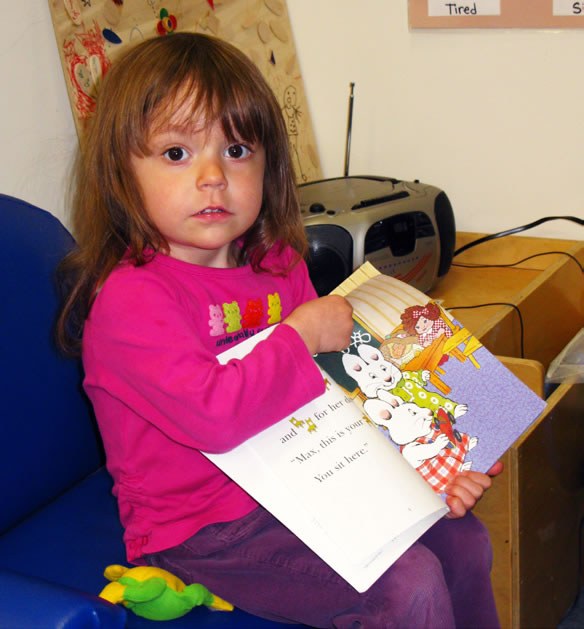Ways to act out stories with young children.

Natural born storytellers
Children are natural storytellers because of their wonderful ideas and natural abilities to play and use language. Stories can be an outlet for children's ideas, a safe place to be imaginative, and can help children make sense of their world.
Bring stories to life
Early educators can help bring children's stories to life by writing them down, reading them to the group (with child's permission), and guiding children to dramatize, or act out their stories. But how do we get the story? And how do we encourage children to act it out?
Observation
Stories can be found by observing play and interactions or by asking the child to tell you their story. Getting a child's story takes attentive, one-on-one time between the adult and child. It is best if the time is uninterrupted and in a quiet area, although some children are fine telling their story amongst an exciting play experience. Be a good observer and key into those exciting moments. "You look like you are having such fun with the toy animals. Tell me about what is happening. Can I write it down?"
Story boxes
It is helpful to have a story box or container where items can be kept, such as paper, pencils, pens, erasers, clips, lists of children's names, a record of when they told a story, and any notes you have observed. The box can be a place to save stories to use for acting out at a later time.
It is a good idea to introduce "stories to act out" at a group time. For example, "We have been hearing and seeing great stories in our group. I have a story box with paper to write the stories onto. You can come to me to share your stories, or I may ask you to tell me your ideas. If you could tell a story, what might it be about?" Children can brainstorm some ideas they may have or good stories they have heard (or created!) in the past. This sets the stage for children to be thinking about their stories.
Writing the Story
Writing the story is simply the adult writing the child's story as it is told. Keeping the story authentic to the child is important. Write what is heard, even if it is improper word usage. This shows respects and also allows us to see how the child uses language, what she is thinking, and how she may interpret ideas.
Taking turns
Explain that everyone gets a turn if they want one. Children will want to know how they can act them out. Come up with ideas that work for you. (As in any experience in early education, involving input from the children is essential.) One way is to let the "author" pick the children to help act out the story. Children will need to think of what characters or things are in their story and how they can pretend to be those ("Sarah, your story has a dog and a worm. What would you like to be? What might the worm do?"). The adult can read the story slowly while the group "acts out" their parts.
Guiding stories
Some stories may amount to only two sentences or one long thought, while others will have a clear beginning, middle and end. It may be useful to keep stories to one page. Using one page may also act as a guide to show children the beginning, middle and end of their story. "How does your story start?" may shares ideas for the beginning. As the end of the page nears, you may guide with, "You are almost at the end of the page. How does your story end?" Review the story with children to see if you have recorded their ideas correctly.
Most importantly, children are given a voice to share their ideas...
Questions are a great way to encourage children to think such as, "What does the green spotted dinosaur do?" or, "What happens when they wake up?" Remember that too many questions may take the child away from their idea.
Rave reviews
Providing children the opportunity to write and act out their stories challenges children to think creatively and adds a rich literacy experience. Children will listen, speak, organize thoughts, create sequence, problem solve, observe written print, see space between printed words, and hear and develop vocabulary as well as interact with adults and peers.
Most importantly, children are given a voice to share their ideas, whether they are real to them or in their imagination.
Tips 7-7

